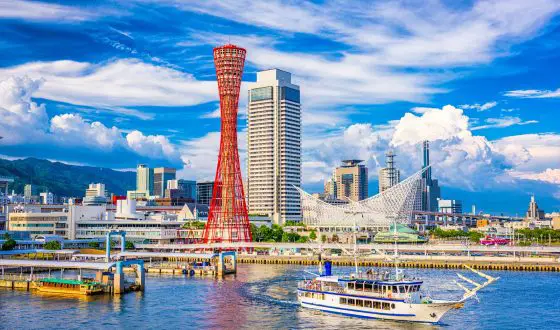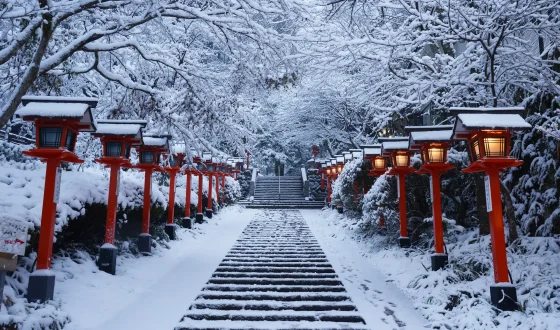Japanese Sauna Culture – Why Saunas Are So Popular in Japan
The usage of saunas has evolved into a lifestyle that began in Finland long ago. Warming up your body and working up a sweat in a hot sauna is the greatest method to recover during the frigid winter months. In recent times, Japan has seen a rise in sauna popularity!
Women and younger generations are increasingly drawn to the concept of utilizing saunas and are even beginning to develop an addiction to them. Here is a description of Japanese Sauna Culture along with a list of some of the most well-known saunas in Japan.
The origins of the Japanese Sauna Culture
It all began in 1957 when a dry sauna, which heated the sauna chamber with a steam pipe, was erected at the Tokyo Onsen (Tokyo Hot Springs) bathhouse in Ginza, one of Tokyo’s busiest retail areas. A few years later, Finnish athletes introduced sauna gear to the athletes’ village for the 1964 Tokyo Olympics, which attracted media attention and rapidly turned into a hot topic of discussion.
The Olympics and Tokyo Onsen served as the spark that started the first “sauna boom” in Japan, which resulted in saunas being popular across the country.
In the 1970s and 1980s, a second “sauna boom” occurred. “Spa lands,” or recreational spaces with public baths, saunas, massage parlors, and restaurants, were built in towns and along major thoroughfares. They quickly gained enormous popularity among families. With the inclusion of saunas, they gained popularity among the general public.
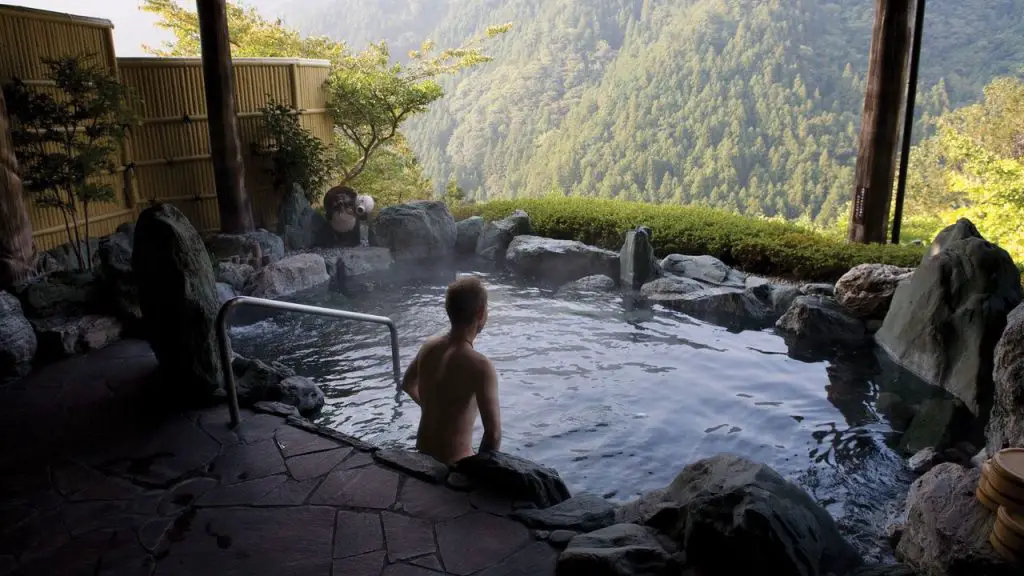
Going in the sauna has become closely linked with visiting a public bath house. (Source: Internet)
The majority of saunas constructed in the city prior to that time were male-only, but because these “spa lands” featured separate saunas for men and women, saunas began to become more well-liked by women.
We are currently going through a third sauna boom as saunas have recently regained a ton of popularity. Sauna-themed comics have grown quite popular. Going in the sauna has become closely linked with visiting a public bath house.
Young people in their 20s and 30s have taken to adopting the Japanese word “totonou,” which conveys the invigorating sense you receive when alternating between sweating in a sauna and plunging in a cool bath.
The Attractiveness of Japanese Saunas
Japan is the only country where sauna became widely used. Along with baths, restaurants, massages, and relaxation areas, hot spring facilities in Japan also have saunas as one of its amenities. One of the main draws for individuals is the ability to unwind utilizing all of these.
After taking a shower and unwinding in the sauna, people may relax in the relaxation area where they can also get a massage, eat, and read comic books. They can also take a snooze in the relaxation area if they get tired.
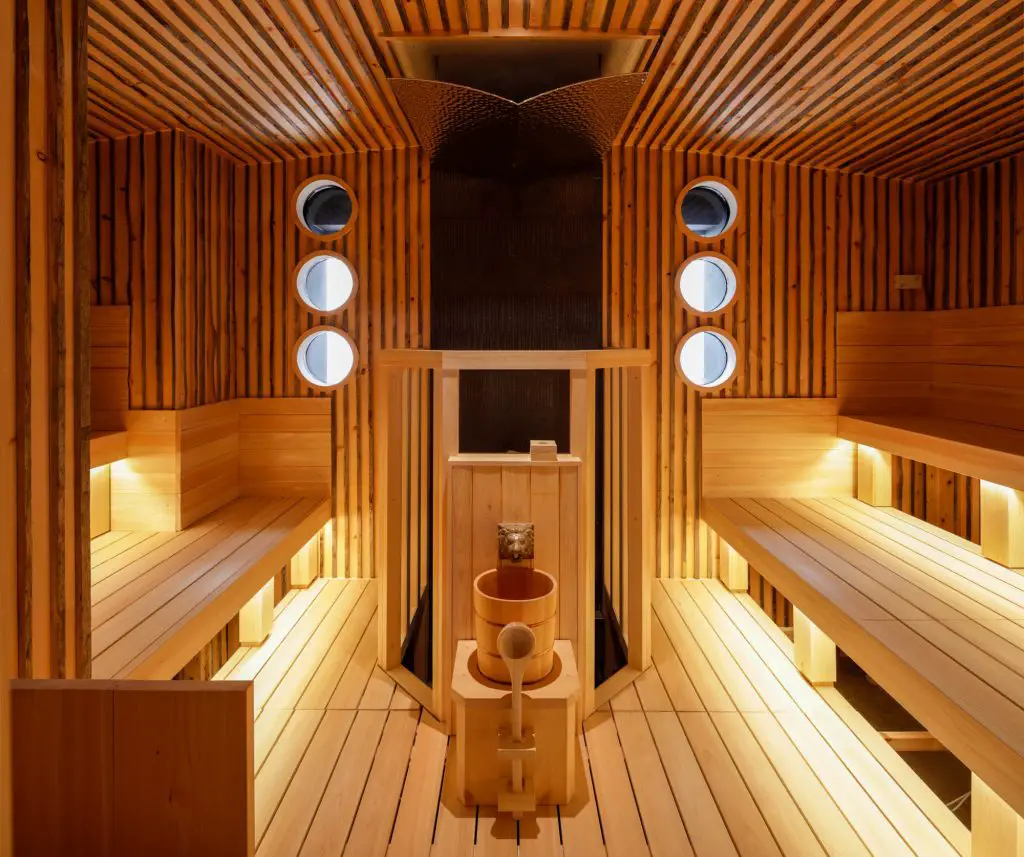
After taking a shower and unwinding in the sauna, people may relax in the relaxation area where they can also get a massage, eat, and read comic books. (Source: Internet)
Many individuals visit these locations during their free time. Additionally, some facilities allow you to watch TV while using the sauna. Japanese saunas have evolved into a type of entertainment.
Japanese saunas
Spa saunas are supposedly “dry” saunas since they lack a sauna stove. They are roughly 80 °C in temperature and 10% humid.
There are hot and cold pools at the spas. The Japanese often switch between the dry sauna and the swimming pool. Although it could be unsettling at first, most individuals eventually find it enjoyable.
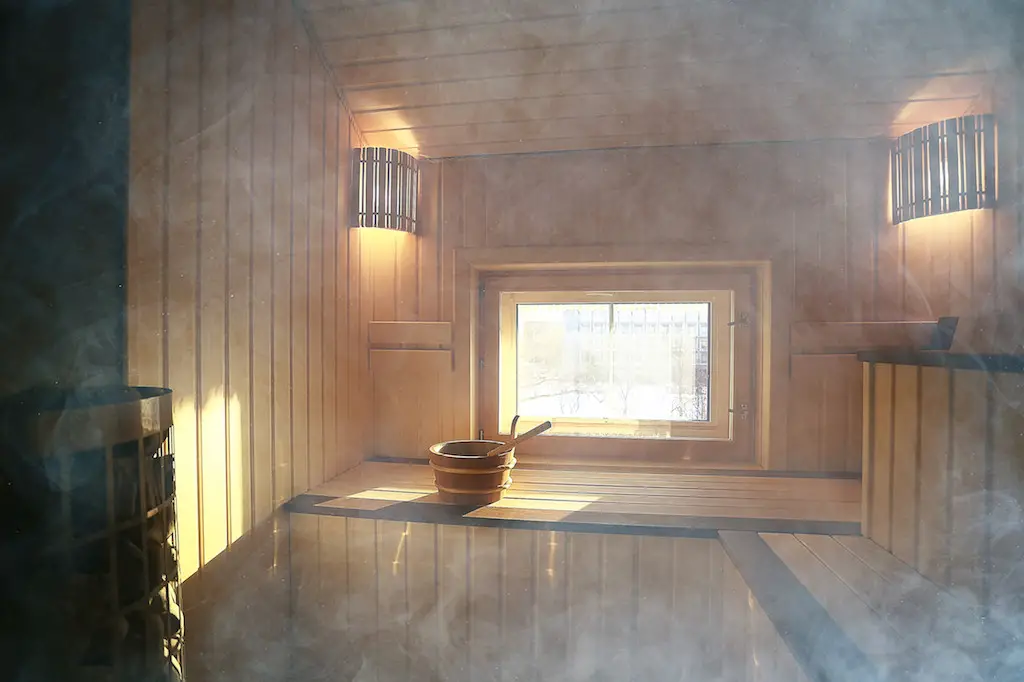
Many individuals take their time getting into the pool because 40 degrees of water might initially feel too hot. (Source: Internet)
Hot tubs are included in the spas. Many individuals take their time getting into the pool because 40 degrees of water might initially feel too hot. Additionally, I’ve heard that certain Japanese spas include pools with electric shocks in them. Do you know anything about this?
Everyone who enters a Japanese sauna is handed a little towel (perhaps made of cotton), which is meant to cover the front of the body while moving around in the sauna area. You can put the towel on top of your head before entering the sauna. You benefit from some heat protection from it. To further insulate themselves from heat, some individuals even soak their towels.
Recommended Sauna Spots in Japan
1. The Rakan Bath at Mifuneyama Rakuen Hotel(Saga)
The Mifuneyama Hotel in Saga Prefecture is home to the final sauna we shall discuss. Individual löyly saunas are available at this hotel, and the sauna room’s speakers will play live ambient noises from the Mifuneyama forest so you may experience what it’s like to be in a real forest.
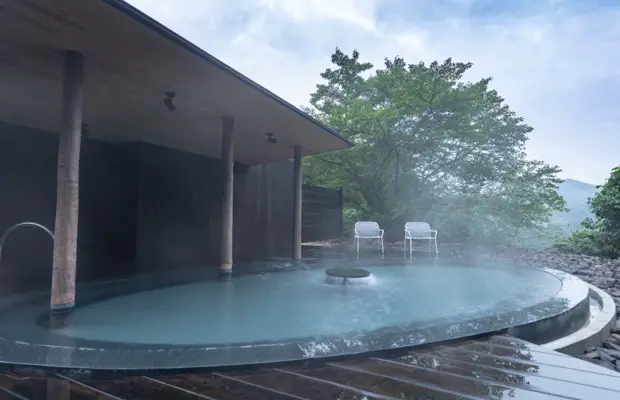
The Mifuneyama Hotel in Saga Prefecture is home to the final sauna we shall discuss. (Source: Internet)
You may melt ice with an aroma on the sauna stones in the women’s dry sauna, which will help you relax and unwind even more. Ice comes in a variety of forms and flavors. It might certainly be a once in a lifetime experience to unwind in their sauna while surrounded by a mystery forest.
Official Website: Mifuneyama Rakuen Hotel
2. Karumaru Ikebukuro (Tokyo)
One of the biggest sauna facilities in the Kanto area is Karumaru Ikebukuro, which is situated in Tokyo’s Ikebukuro district. There are four different kinds of saunas, four different kinds of water baths, and a total of five different kinds of baths. A sauna lover’s paradise, undoubtedly! You might not be able to sample every kind of sauna and bath because there are so many to pick from.
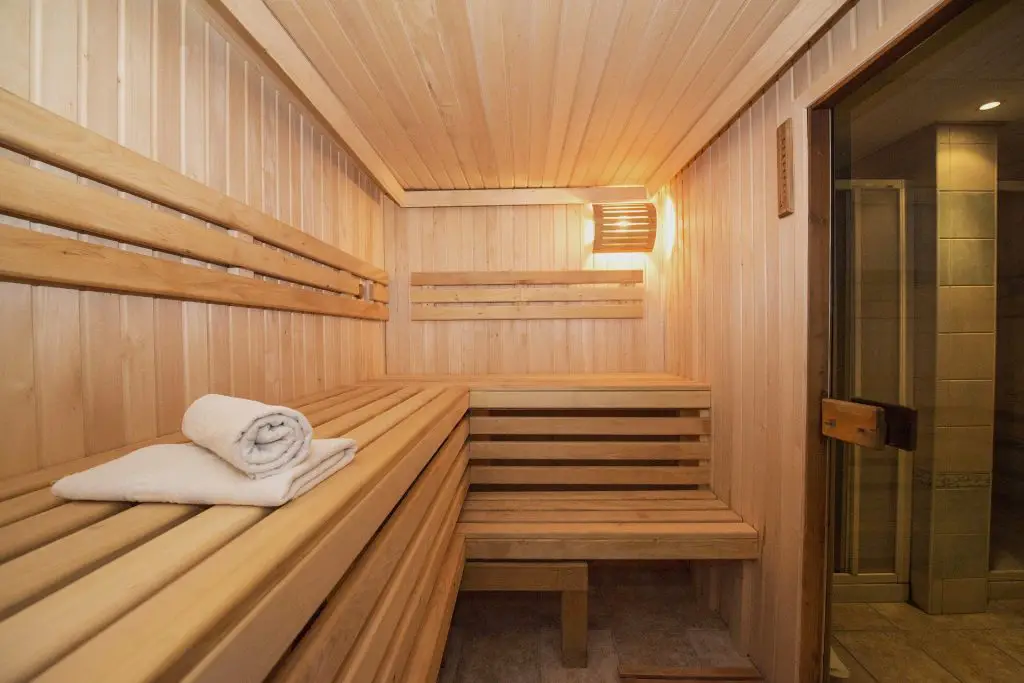
One of the biggest sauna facilities in the Kanto area is Karumaru Ikebukuro, which is situated in Tokyo’s Ikebukuro district. (Source: Internet)
After using the saunas and hot springs, you may have a good cool beer and some nibbles in the café. The fact that this facility is often solely accessible to men is the only drawback. If you wish to utilize this facility, check the official website for the days it is open. A ladies day is organized for the woman saunners once a month.
Official Website: Karumaru Ikebukuro
3. Well Be Fukuoka (Fukuoka)
Well Be Fukuoka is well known for its saunas and has its primary facilities in Nagoya and Fukuoka. You may take use of both their “Karafuro,” a traditional Japanese steam bath, and their Finnish Löyly saunas.

Well Be Fukuoka is well known for its saunas and has its primary facilities in Nagoya and Fukuoka. (Source: Internet)
At the Karafuro, you may gradually cure yourself by reflecting on yourself and fully engaging your five senses. Well Be Fukuoka is the perfect spot for you if you just want to unwind and forget about your hectic life.
Official Website: Well Be Fukuoka
4. Yulax (Kumamoto)
Yulax is a hot spring facility with a stellar sauna reputation that is situated in Kumamoto City, Kumamoto Prefecture. Even the locals agree that “Yulax is really famous for their saunas.” The workers performed the Aufguss sauna every hour from noon to one in the morning every day. Germany was the country where the Aufguss sauna was originally produced.

Yulax is a hot spring facility with a stellar sauna reputation that is situated in Kumamoto City, Kumamoto Prefecture. (Source: Internet)
By adding water to heated sauna stones, the crew creates copious volumes of steam every hour, which they subsequently fan with towels. The phrase “This sauna warms us up all the way down to our toes” is used frequently by visitors, and more and more individuals have developed an addiction to it.
Official Website: Yulax
5. Skyspa Yokohama (Kanagawa)
From Yokohama Station, it takes three minutes to go to Skyspa Yokohama. A Finnish dry sauna and an old Roman steam sauna were added to their restored facilities in November 2018. The temperature in the men’s Finnish dry sauna is usually maintained at roughly 90 degrees (194°F), which causes you to sweat heavily.
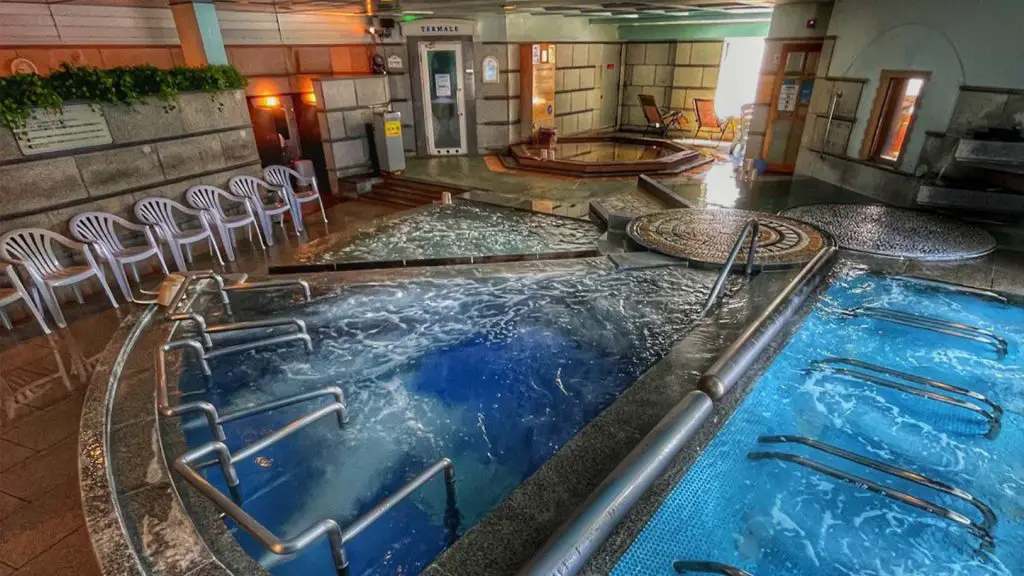
From Yokohama Station, it takes three minutes to go to Skyspa Yokohama. (Source: Internet)
Even the employees will sprinkle water on the stones to improve your experience and give you more steam. The temperature and humidity are constantly regulated at 25% in the Finnish dry sauna for ladies, which is set at 80°–85°F (176°–185°F). They have a löyly sauna that you may use to relax your body and mind.
Official Website: Skyspa Yokohama
Book a room here: booking.com
You can also like:
- Do Japanese Guys Wear Makeup? Exploring Gender Norms and Beauty Standards in Japan
- What is Tokyo Known For? Discover the 10 Best Things Tokyo Famous For
- 10 Best Ryokan In Japan: Best Places for International Visitors
6. Koganeyu (Tokyo)
Check out Koganeyu if you want to unwind in a soothing sauna in the heart of Tokyo. You will enter a realm of healing after only a six-minute walk from Kinshicho Station’s north exit. One of the greatest venues in Tokyo to experience a true Finnish sauna is said to be this sauna. In addition to the auto löyly sauna, the walls of the men’s sauna are lined with maifan stones and fashioned of Japanese cypress.
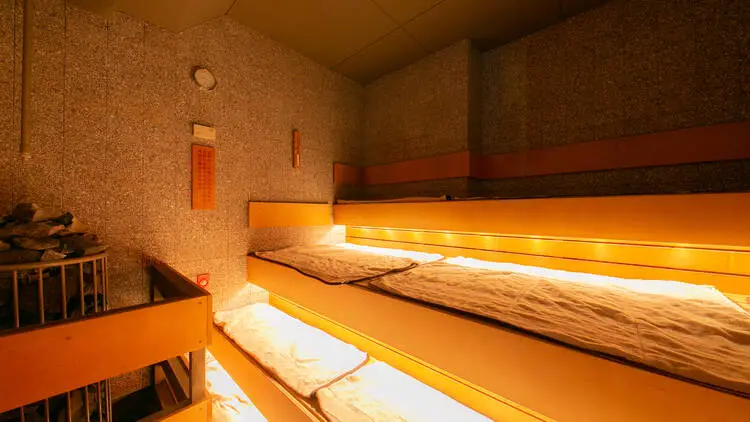
Check out Koganeyu if you want to unwind in a soothing sauna in the heart of Tokyo. (Source: Internet)
Individual löyly saunas are available in Japanese cypress-built cabins at the women’s sauna. For the exclusive use of the various löyly saunas, there is also water with a constantly changing scent, which is excellent for the regulars. Why not travel to Koganeyu after you’ve finished your touring in Tokyo to rest and recover?
Official Website: Koganeyu
Something You Need to Know When Coming Sauna to Have A Great Experience
What You Should Know Before Using Sauna
In order to avoid any misunderstandings or bad situations, we’d like to explain certain etiquette and guidelines that you should remember when visiting a sauna.
Those Who Might Be Refused Entry
Those Who Have Tattoos
No matter the gender of the person with the tattoo, it is believed that they are a sign of organized crime in Japan. You may be refused entrance to a sauna (as well as to swimming pools, waterparks, and public beaches) even if your tattoo is small or charming. To find out their specific tattoo policy, consult the onsen’s website in advance.
Please be aware that this is evolving and that certain regions of Japan could be more forgiving than others. For instance, Beppu permits entrance to those who have ink. Also often acceptable are tattoos that can be covered up using tattoo sleeves and stickers.
Health Issues
Before going to an onsen, anyone with heart, kidney, or lung conditions should see a doctor.
Fevers People
While this is true for standard bathtubs as well, avoid going to an onsen at all costs as your symptoms can worsen.
Drunk people
Blood pressure dips and potentially catastrophic arrhythmias can be brought on by the heat.
Bleeding individuals or women on their periods
To avoid infections, stay away from onsens if you have open wounds. Immune systems become less robust during menstruation, making it simpler to catch an illness or an infection.
Even while wearing a tampon, it’s polite to avoid using onsens when menstruating, especially on days with strong flow. Because onsens in Japan, like swimming pools, do not utilize strong disinfectants, it is not very sanitary for everyone.
What to Bring to the Sauna?
1. A towel
In the changing facilities, there are two sizes of towels: large and little. However, in some inns and hotels, towels aren’t provided in the changing rooms, so guests must bring their own from their rooms.
The little towels are for drying off after bathing your body in the bathtub and before going back to the dressing room. The little towel may be brought into the bathtub.
2. A Rubber Hair Tie
If you have long hair, carry a hair tie to prevent it from hitting the water in the bath, much like if you were going to the pool.
3. Sauna Shampoo and Soap
You can usually get toiletries at onsen inns and hotels, but you must carry your own to a sento—especially if it is a tiny, local one.
After finishing up in the shower, gather your stuff and proceed to the bathtub!
4. There’s No Need For A Swimsuit
People take naked baths in sauna. There’s no need to pack one because wearing a bikini in the shower is often prohibited. Having said that, some establishments permit visitors to dress in swimwear. If you have to wear a swimsuit for a particular reason, please confirm in advance.
5. Put your slippers or shoes on the floor
You must wear nothing except your feet to enter the changing area. Shoes or slippers should be removed.
After Entering Sauna
1. No Running
The chemicals of the hot spring water make onsens’ flooring particularly slick, so you shouldn’t run. Take extra care around young children and expectant women.
2. Before getting warm in the tub, take a shower
Clean yourself up in the shower completely before entering the bathtub. Swimming or washing oneself in the tub is thought to be quite impolite because the bathtub is a place to warm yourself.
3. After use, wash the buckets and chairs
Use the chairs and buckets supplied, then quickly rinse them out and reposition them where they belonged.
4. Many sauna forbid bringing alcohol inside
Everyone will be naked in the bathtub. Breakable glass bottles are often forbidden in bathtubs for safety reasons.
Note: In the bathtub, you cannot wash your clothing. Leaving your towel on the bathtub’s water is also impolite. This is because any soap or detergent that is left over will contaminate the water.
After Your Bath
- After removing your bath towel, return to the dressing room. To avoid leaving water stains, dry off with the bigger towel before returning to the changing area.
- Make sure you have all of your possessions
What Distinguishes A Japanese Onsen From A Sauna?
You’ve probably heard of a Japanese onsen if you’ve done any study on Japan. They are popular all around the world and may make a vacation to Japan particularly memorable.
Although there is a distinction between a sauna and an onsen, it is not very significant. Japanese public bath houses called sauna have water that has been heated artificially. Depending on where you go, you could discover jacuzzis, saunas, and cold water baths among the many different types of sauna.
Natural hot springs that develop underground are known as onsen. Using geothermal energy, the water is warmed. This means that if you find yourself in an outdoor bath, you are probably in an onsen. To avoid going to a sauna expecting a genuine geothermal hot spring from the soil, it’s crucial to understand the distinction.
What Are the Prices of Japanese Sauna?
530 sauna are located just in Tokyo. They almost all charge 470 yen ∼ 3,4 USD for entry and are all part of the Tokyo Sento Association. Japanese saunas are sometimes found in sauna, and they are usually extra-cost. Bring some change if you need anything else extra, such as a towel or beverage. Bring cash to pay, as is customary across much of Japan. Credit cards won’t be accepted by the majority of sauna.
Note: While some sauna feature ticket vending machines where you may buy the ticket and then present it to the attendant, others require payment directly at the traditional attendant’s station.
When Do Japanese Sauna Open?
While every sauna is unique, the majority open around 3 pm and remain open until 11 or 12.
Where Can I Find Sauna in Japan’s Other Cities Besides Tokyo?
If you type “sento” into Google Maps, you will get a ton of information on sauna in Tokyo and around Japan. The Noren hanging outside the door will let you know when you have arrived at the sauna.
This curtain is hanging at building entrances in Japan when the doors are open. Three curving lines rise out of an oval to represent heat in the sauna symbol. View the picture up top!
In Japan, does anyone use a sauna?
Most often, guys. But sauna use is becoming more popular among women as well. Approximately 6,000 saunas, the most of which are found in spas and gyms, are said to exist in Japan. Private saunas and spas with Finnish-style saunas are, of course, options as well.
In the spas and saunas, visitors frequently stay all day. In a humorous incident, a man spent the entire day in the sauna world, according to one respondent. After he returned, he intended to offer ice cream to his family. He returned from the sauna and woke his family up at three in the morning for ice cream.
The Japan Sauna and Spa Association estimates that 10 million people routinely use saunas. That equates to 8% of the total population. In recent years, the Japanese sauna experience has altered. It used to be considered a physical performance rather than a pleasure. Japanese people nowadays have mastered the art of relaxation and enjoyment in the sauna.
What Services Are Offered at The Sauna?
The restrooms in almost all sauna will contain a hairdryer, and some may even include extras like Q-tips and hair spray. You may anticipate finding body wash, shampoo, and in several of the bathhouses we visited, conditioner.
Bring conditioner and face wash with you if, like us, you constantly require them after a shower. Razors and deodorant are among the many items that may be purchased at sauna.
FAQs
1. Why Do Japanese People Enjoy Bathtub Soaking?
Summers in Japan are quite sweltering. Japanese dwellings have always been constructed to allow for optimum ventilation in order to address this issue. Due to the fact that dwellings may get quite cold in the winter, individuals developed a preference for taking a bath to warm up.
The Japanese bathing culture may also have a significant cultural component. In Japanese shrines and temples, misogi, or the purifying ritual, is customary and is used for both the body and the soul. Misogi has always been connected to meditation and spiritual pursuits. But this idea could contribute to the prevalence of frequent bathing in Japan. Beyond only bodily impurities, the bathtub offers a space to wash and unwind.
Every day of the year, people soak in the tub. The benefits of warming up include increased circulation, reduced tiredness, and relief from shoulder tightness. Increased metabolism, which can have nutritional and skin-beautifying consequences, is another benefit of increasing body temperature.
2. Is it OK to have a tattoo in the sauna?
In the past, having a tattoo was supposed to indicate membership in the infamous Yakuza, despite the fact that tattoos are uncommon in Japan. As a result, tattoos were forbidden in sauna and onsens.
The majority of sauna owners are attempting to be more tattoo-acceptant, though, since the times are changing. To establish a friendly and inviting environment for everyone, almost 90% of the sauna in Tokyo now cheerfully welcome persons who have tattoos within their buildings.
There will be signs at the entry informing you if tattoos are permitted or not.
3. Should I Wash First?
Yes. You must first cleanse your body before entering the Japanese bathhouse. Every sento has rows of many shower heads and chairs for washing. You’ll probably locate shampoo and soap next to the showerhead. Before entering the bath, it’s crucial to wash your body off here.
Although it can sound difficult, it’s not. Simply take a seat (don’t stand up) on the stool, switch on the shower, and start washing. To prevent water waste, keep in mind to switch off the water while not using the shower head.
If you don’t want to wash your hair, you don’t have to. Just be sure that your long hair isn’t in the tub if you have some. Bring hair ties so you can tie it up in a bun as you rest.
4. Are sauna popular in Japan?
In Japan, people enjoy using saunas a lot. Although they are originally from Finland, they have since traveled the world and settled in Japan, where they have long been cherished and integrated into everyday life.
5. What customs are associated with Japanese saunas?
Around 80°C and 10% humidity characterize their environment. The spas contain both warm and cool pools. Japanese people alternate between using the dry sauna and swimming in the pool. In spite of the initial discomfort, most individuals eventually find it enjoyable.
6. Why do Japanese people drink milk after bathing in a sauna?
In Japan, milk was already well-known as a nutrient-rich food. And now that it was accessible at sento, it was the ideal method for rehydrating and nourishing the body after a bath.
7. What should you wear in a Japanese sauna?
You have to be entirely nude. This is a difficult one for foreigners, but there is no getting around it. Never, ever bring clothing, towels, or other items into an onsen in Japan because they are seen as “dirty” or “sullied.”
8. Why are saunas so popular?
Saunas have long been used to induce a state of relaxation. Blood flow to the skin increases when your heart rate rises and your blood vessels widen. Saunas could also promote better blood flow.
9. How much time should you spend in the sauna?
At most, 1-2 times per day are allowed for bathing, and after becoming acclimated to onsen, 2-3 times per day is permitted. The length of a bath depends on the temperature of the water, but it should normally last 3 to 10 minutes at a time. If you become used to it, you may extend it to 15-20 minutes.
10. Can a sauna burn fat?
In fact, depending on the type of sauna you use, sitting in one can help you burn through fat. Traditional wet or wood-burning saunas, like a steam room, help your body burn calories, but they have been shown to be less effective in burning extra fat.
Conclusion
We listed 6 of the top and most well-liked Japanese sauna establishments. Have you discovered any that you are curious about visiting? Check the official website before you go because some of the saunas mentioned are only accessible to paying customers or need reservations.
Japan’s popularity of saunas is growing, and it has lately undergone several changes. When you return, check out one of these well-known Japanese Saunas Culture to enhance your experience.

